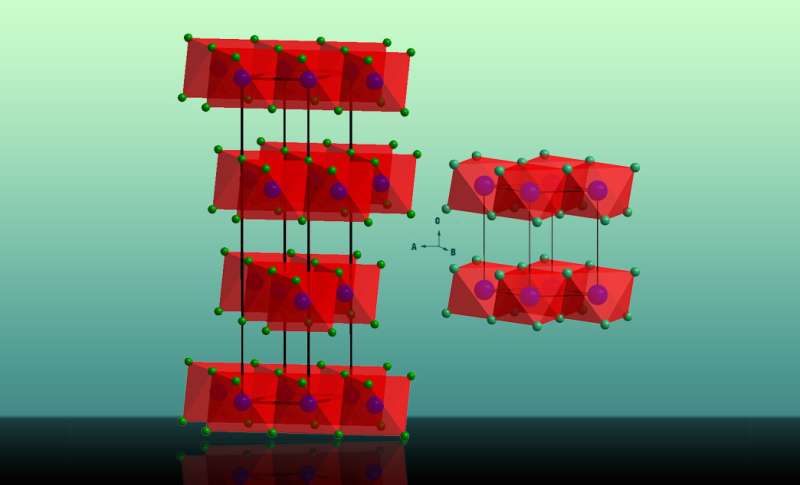Scientists find de-icing agent remains stable at more than a million atmospheres of pressure

Lawrence Livermore National Laboratory scientists have combined X-ray diffraction and vibrational spectroscopy measurements together with first-principle calculations to examine the high-pressure structural behavior of magnesium chloride.
Magnesium chloride (MgCl2) is well known to be an effective de-icing agent, for example, in the aviation industry. Magnesium compounds, including MgCl2, also could function at extreme conditions as effective biocidal agents and work to neutralize biological weapons. The high pressure properties of these materials are important for understanding and predicting their behavior in complex, chemically reactive environments such as detonations that are of interest to the Defense Threat Reduction Agency (DTRA).
The team observed an extensive stability of MgCl2 under pressure that contradicts the well-established structural systematics. The research is published in the Aug. 12 edition of Scientific Reports.
The immediate technical aim of the study was to provide equations of state (EOS) and structural phase diagrams to improve the confidence of semi-empirical thermochemical calculations predicting the products and performance of detonated chemical formulations.
"In order to determine accurate EOS data, we first conducted high-pressure X-ray diffraction measurements up to a nominal detonation pressure of 40 gigapascals (GPa) or 400,000 times more than our atmospheric pressure," said Joe Zaug, an LLNL physical chemist and project leader.
"The EOS data enable the development of thermochemical prediction tools to guide the development of effective formulations to defeat bioagents," said Sorin Bastea, the project's lead LLNL computational physicist.
"According to previous theoretical studies and the well-established phase diagram of high pressure compounds, MgCl2 should have transformed to a higher coordination number (more dense) and 3D connectivity structure well below 40 GPa, through a first order phase transition," said lead author Elissaios (Elis) Stavrou, an LLNL physicist.
In contrast, MgCl2 remained in a low-coordination layered structure. Even after crossing past the 1 megabar (1 million atmospheres) pressure limit, no structural phase transition was observed.
The team's experimental results also were confirmed by first principle calculations performed by their collaborator, Assistant Professor Yansun Yao at the University of Saskatchewan. According to Yao, the surprising pressure stability is inherent and not due to a kinetic barrier.
Stavrou explained: "High pressure compounds are archetypal ionic solids and after nearly 50 years of systematic study, theorists tend to suggest that these pressure-dependent structures and transitions are predictable. Our results highlight the need to re-examine currently established structural systematics and to be prepared for unexpected results."
More information: Elissaios Stavrou et al. High-pressure X-ray diffraction, Raman, and computational studies of MgCl2 up to 1 Mbar: Extensive pressure stability of the β-MgCl2 layered structure, Scientific Reports (2016). DOI: 10.1038/srep30631
Journal information: Scientific Reports
Provided by Lawrence Livermore National Laboratory




















